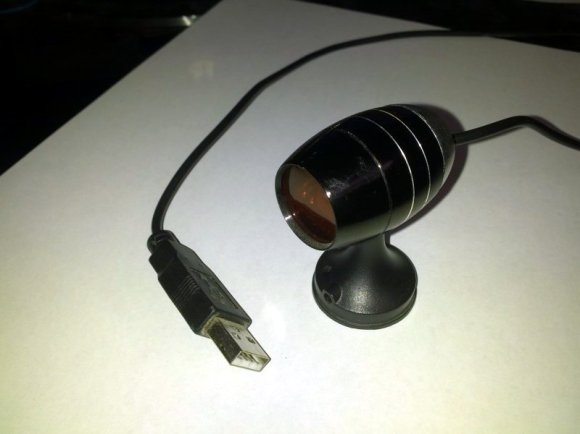
The problem with building your own electronics for the living room is that the final product may not fit your decorating style. This was true with [Itay’s] prototype of a universal USB IR receiver. So after testing it out for a few weeks he decided to build a final version that started by selecting an enclosure he could be proud of.
He came across an LED flash light at the dollar store which has an aluminum body. When we read about this we envisioned a cheap version of a Mag Light from which he removed the cylinder that holds the batteries. But actually, the pod seen above is the entire flashlight (with an added base). It forced him to design a tiny surface mount PCB to fit everything inside.
It’s not too much of a stretch since IR receivers tend to be small anyway. [Itay’s] design put a PIC 18F2553 on one side of the board. The other side hosted the through hole components: an IR receiver, LED for feedback, and the connections for the USB cable that exit through the rubber button cover that used to switch the flashlight on. He had a problem with one of the resistor values which took a while to figure out. But eventually he got it working. It’s been in use now for six months.














You learn more when something doesnt work, than when it works first time, but its awesome that he didnt give up.
Regarding screwing the base into the aluminium case – he really should have used a tap to get the thread, instead of just forcing the screw in. They’re not expensive, and would have saved a load of time and effort.
Or he could cut a slot into the threads of his base, to make it self-tapping. Both taps and self-tapping screws have such slots, to form a cutting edge and to remove metal chips. A Dremel (or other brand) small cutting wheel works nicely for this. Not using the right tools (don’t have or can’t find) is a hack, sure, but that is what this website is for, eh?
And that “load of time and effort” was probably significantly less time and effort than commuting to the hardware store and purchasing some tools, and certainly much less time than purchasing such tools from a Chinese eBay store and waiting for them. So perhaps for a small and quick hack, the “no tap tool” hack is what “saved a load of time and effort”.
I agree with your point, and I guess it depends on how many times you need to do it. He mentioned nearly ruining the aluminium light casing by forcing the screw in – so maybe having the tap would have saved time. Then again, we’ve all uses the wrong tool – my two are nail file for a screwdriver, and bread knife for a hacksaw.
But I did like your suggestion about cutting slots in the bolt – never thought of doing that.
Then just use the invisible stuff. Xantech makes all kinds that are invisible and that way you dont have to have the IR bug or any of your gear visible at all. Heck at one time I had everything in the basement and use a Xantech IR extender to send ir to 8 different devices down it. Nowdays IR is no longer needed as you can get RF universal remotes or if you have some money, get a Control4, AMX, or Crestron system to control it all and take advantage of IP control
And that could be done with this simply by putting the IR led on a wire like they do.
Kudos to him! That’s way more than I seem to be able to get done on any given weekend!